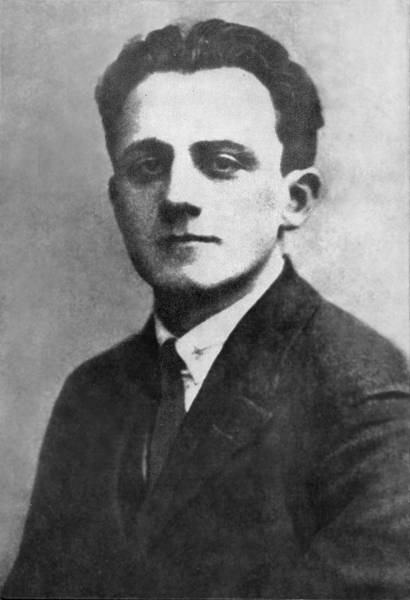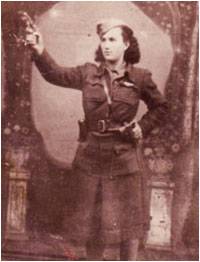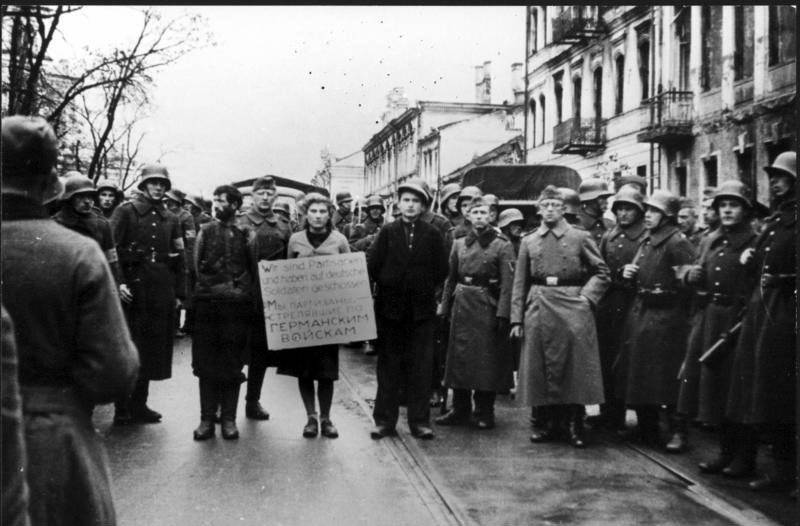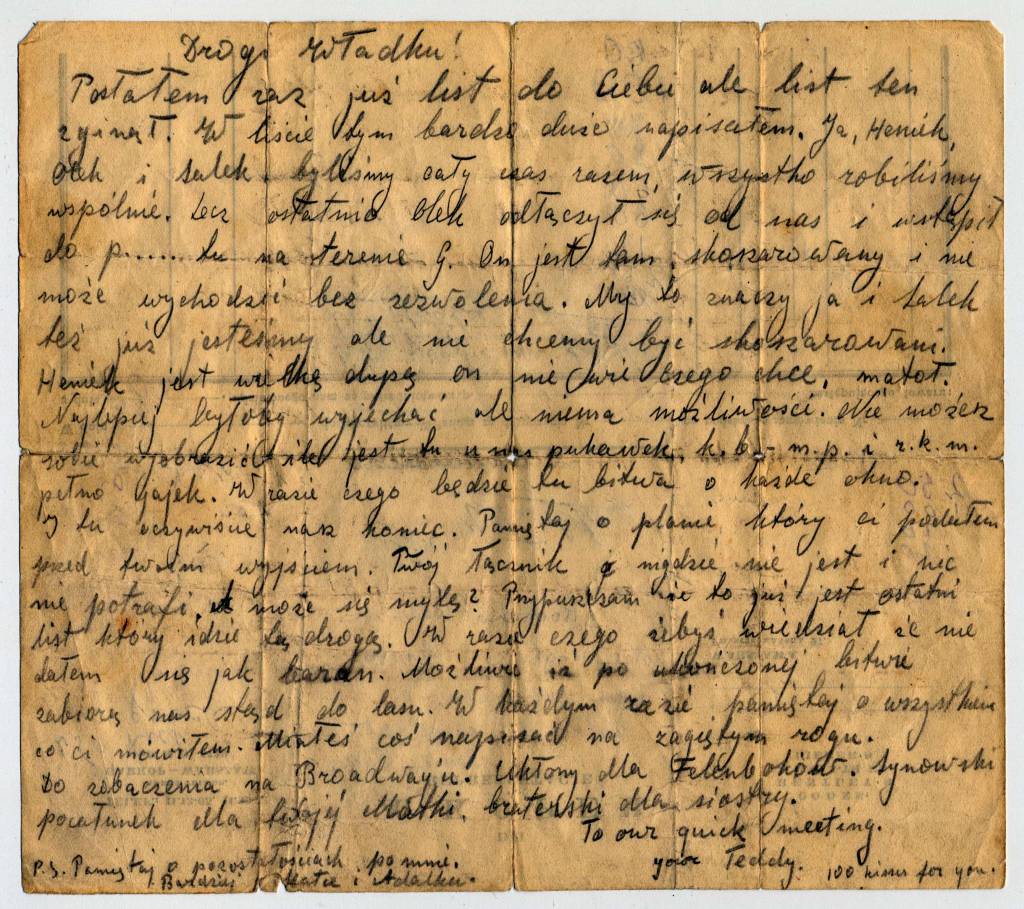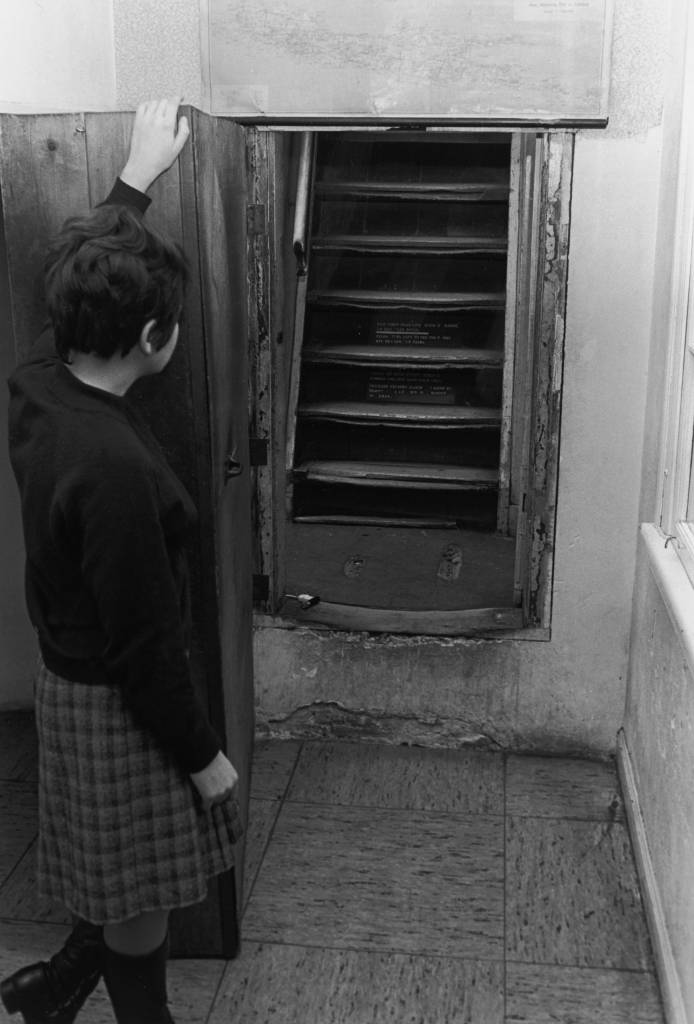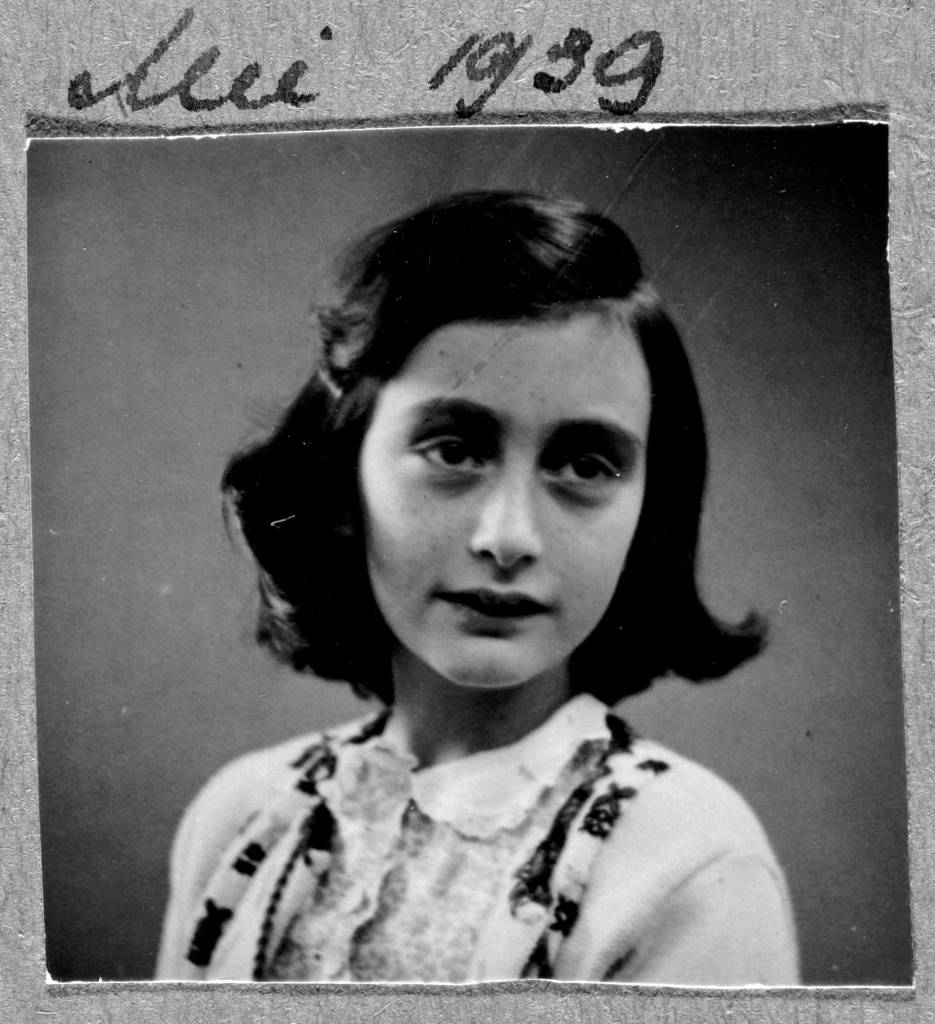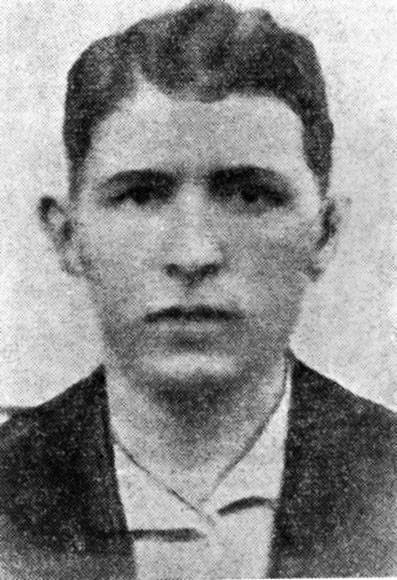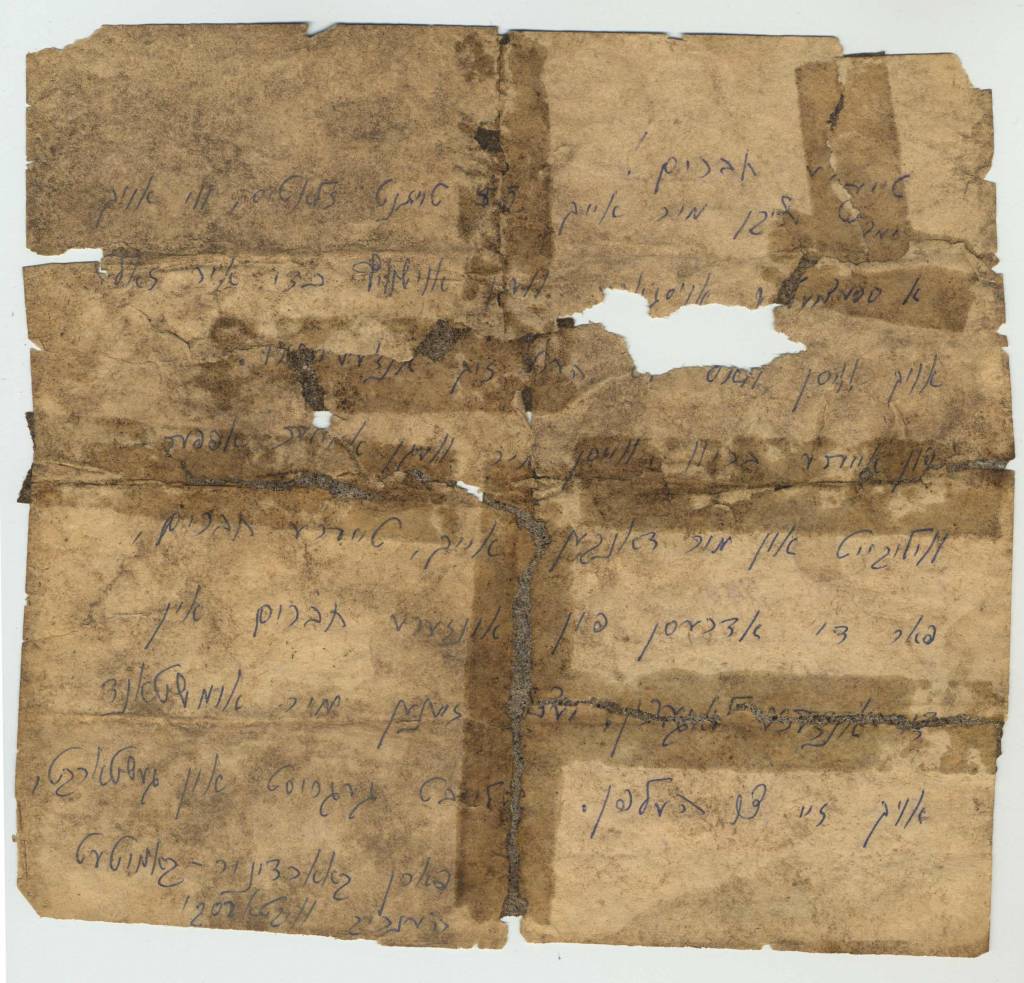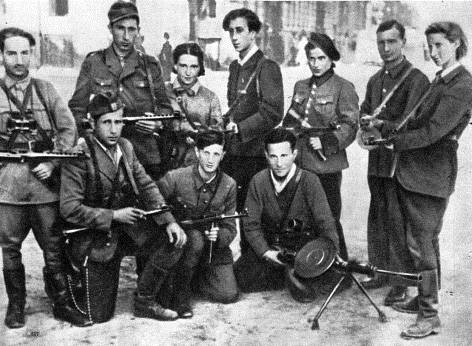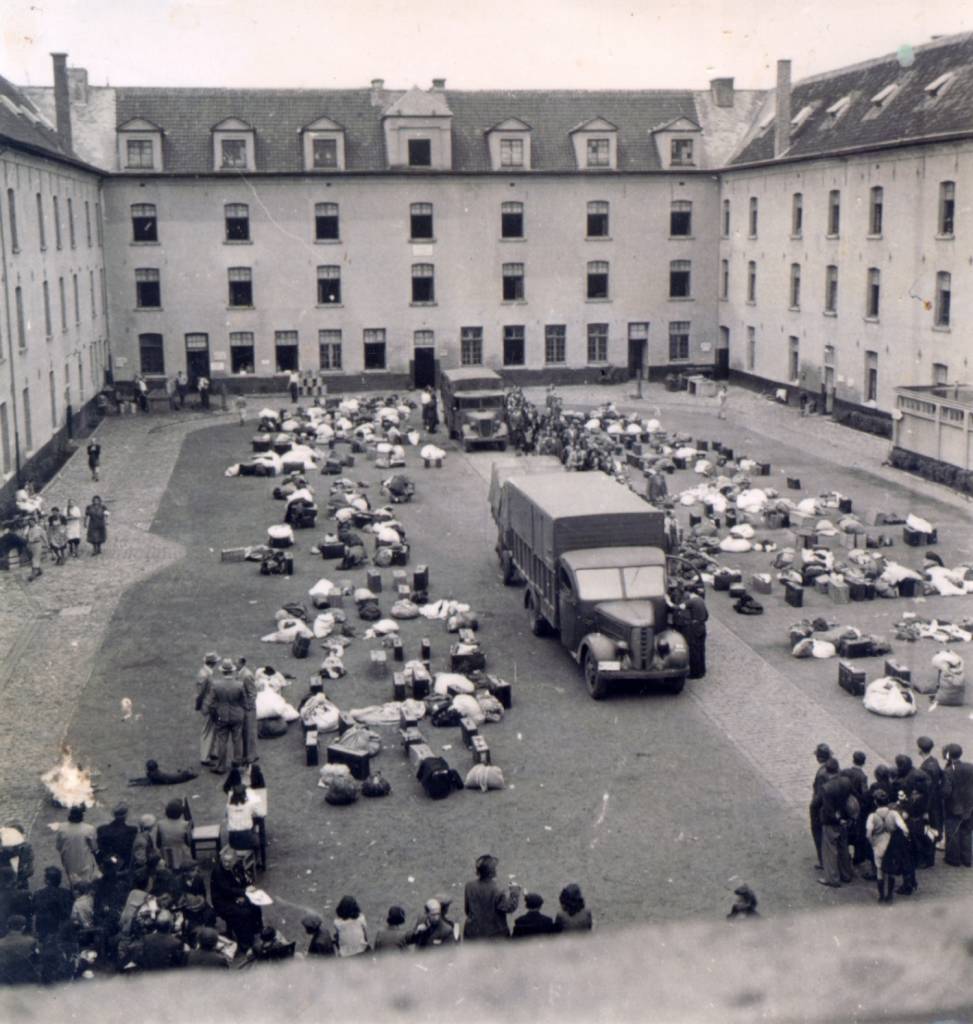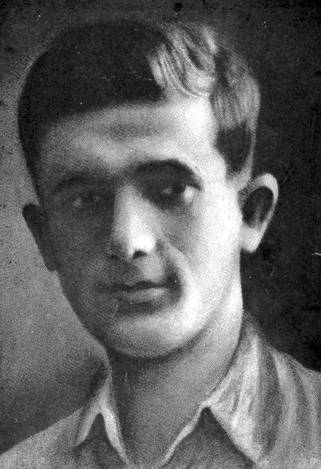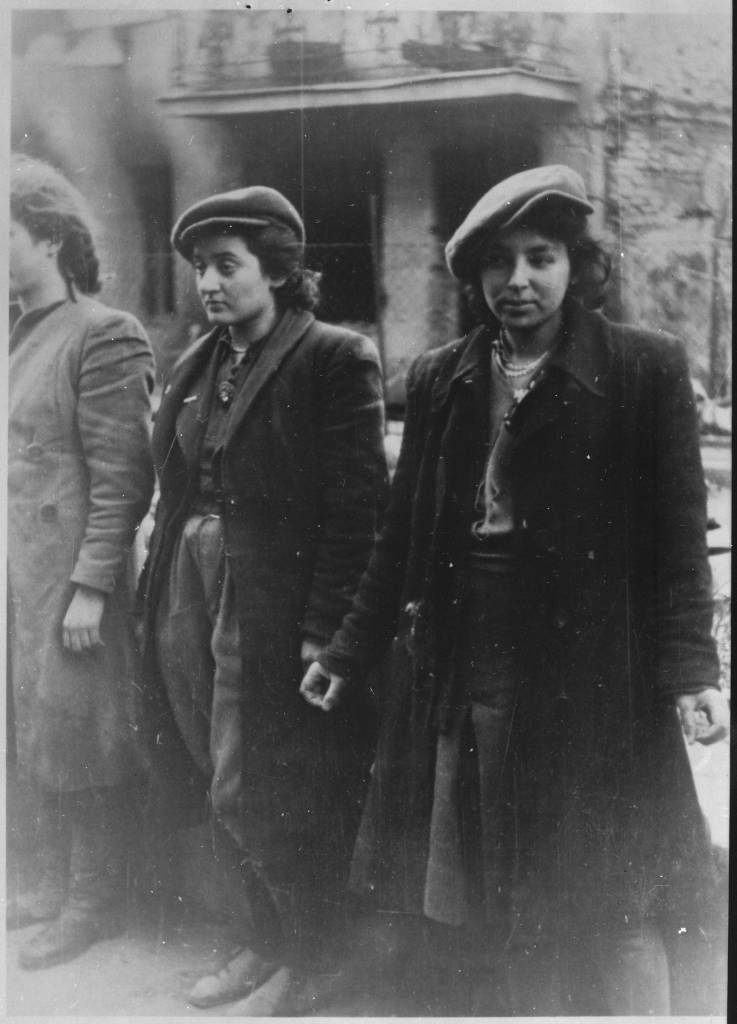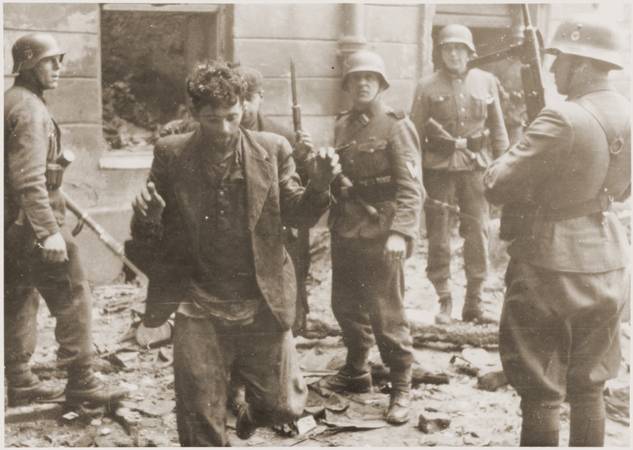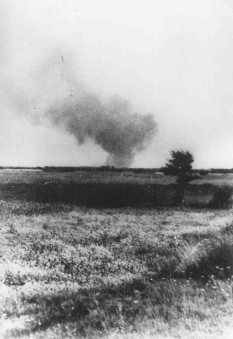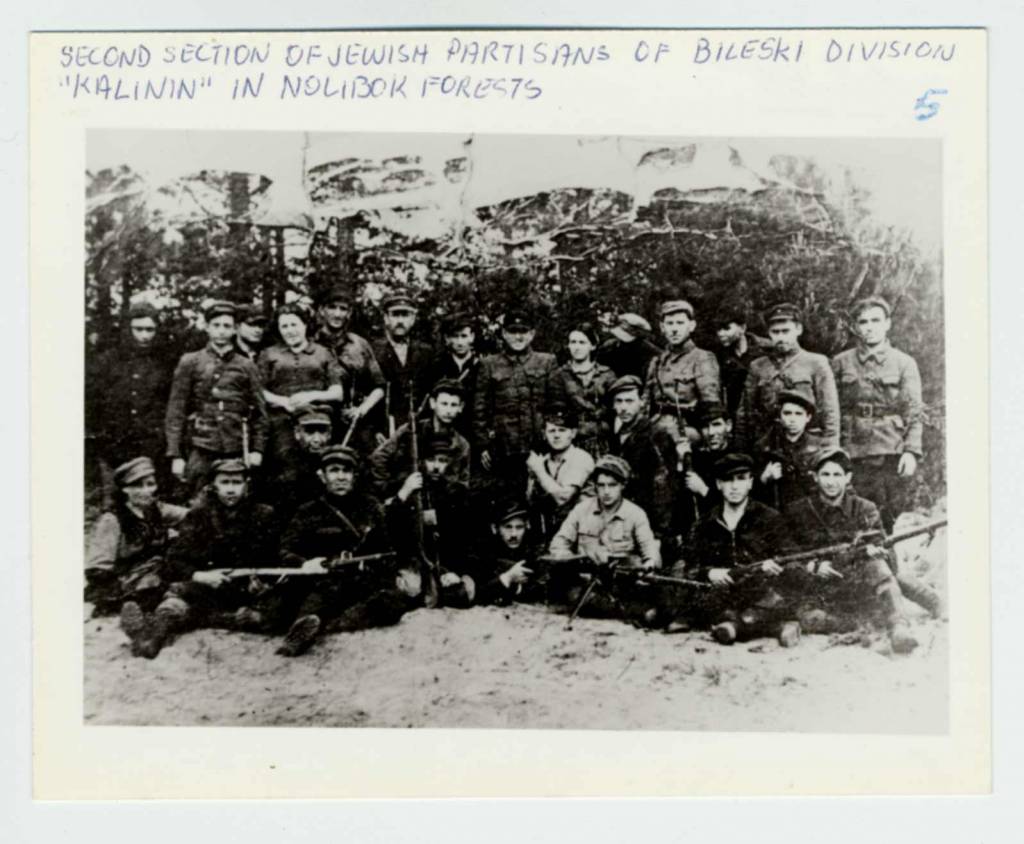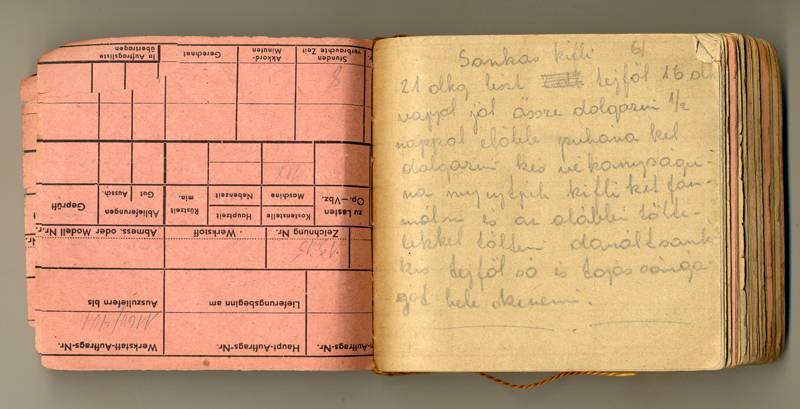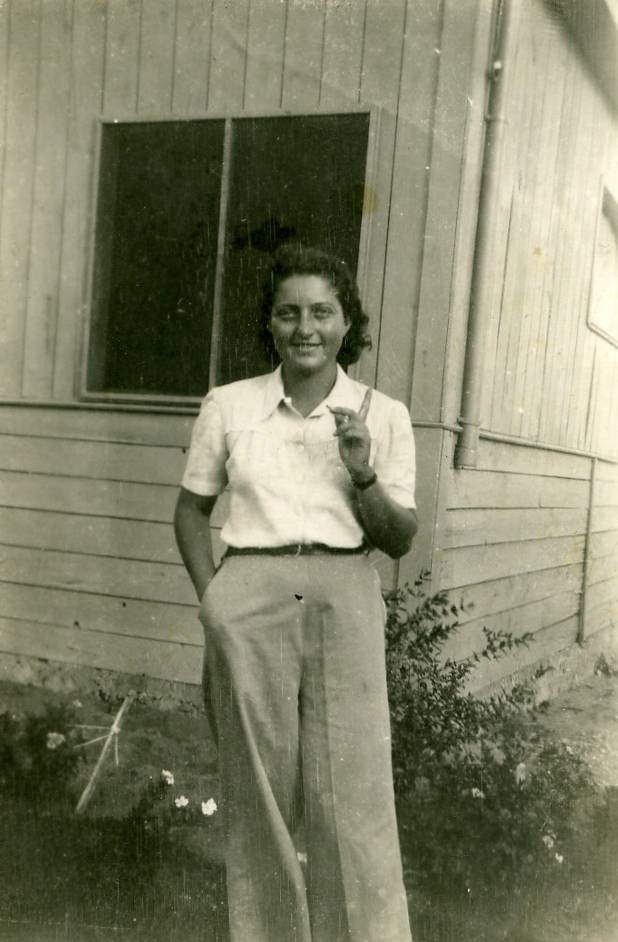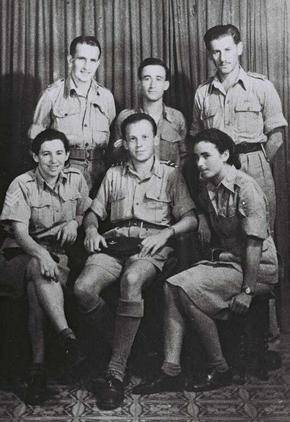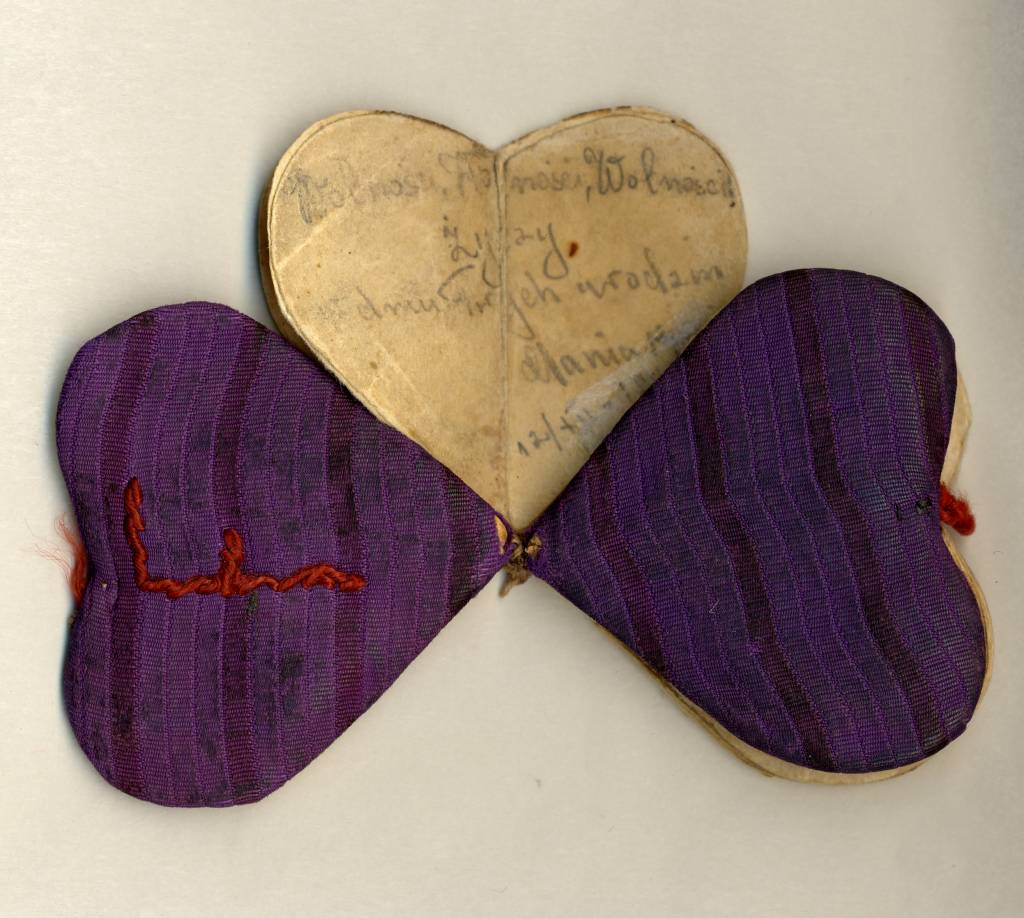-
All over Europe, Jews resisted Nazi oppression in a variety of ways. Individually and collectively, Jews organized armed resistance, escaped from ghettos, rose against their guards in concentration camps. Often, their resistance took the form of aid and rescue. It also manifested itself in acts of spiritual and moral resistance, starting with the documentation of their struggle to survive and to keep their dignity. The question is not why there wasn’t more resistance, the question is, how could there have been so much?
-
-
October
Jewish historian Dr. Emanuel Ringelblum (1900-1944) begins a chronicle of the life of Jews in Warsaw. His archives was transformed into "Oneg Shabbat", an organized secret operation involving dozen contributors after the sealing of the ghetto in November 1940. Composed of historians, writers, rabbis and social workers, Oneg Shabbat chronicles the life in the ghetto. Its members work as a team, collecting documents and soliciting testimonies from dozens of volunteers of all ages. Their work ends in January 1943.
-
-
-
July
Jewish resistance organizes in Greece. Following the invasion of Greece by the German troops, Sara Fortis decides to become an andarte (resistance fighter). Going from village to village, she recruits other women who want to fight. On their first mission, they throw Molotov cocktails to distract the enemy which allows the male partisans to attack. They join in many missions, burning down houses and executing Nazi collaborators.
-
-
December
After their parents and two of their brothers are killed by the Germans in the Nowogrodek ghetto (Belorussia); brothers Tuvia, Asael, Aharaon and Zus Bielski establish a partisan group in the Zabielovo and Perelaz forests. At first, about 30 family members and friends hide together. With the help of non-Jewish Belorussian friends, they help escapees from the surrounding ghettos. By the end of 1942, their group consists of more than 300 people. “I would rather save one old Jewish woman than kill 10 Nazi soldiers” Tuvia Bielski.
-
-
January 1
In Minsk, Jewish underground fighter Masha Bruskina and fellow partisans are hanged by the Germans, their bodies left dangling for days, to discourage other resistance activity.
-
-
January
In Toulouse, France, Abraham Polonski and his wife Eugénie, Lucien Lublin, Russian poet David Knout, and his wife Ariane Skriabina create the Jewish resistance group Armée juive (Jewish Army). At its height, it consists of 2,000 fighters. Armée juive smuggles hundreds of Jews to Spain and Switzerland, launches attacks against occupying German forces and targets Nazi informants and Gestapo (German secret police) agents. The Army later becomes the Organisation Juive de Combat (Jewish Combat Organization) and is officially registered under the French Forces of the Interior (FFI).
-
-
April
In the Warsaw Ghetto, Ted Leibowitz writes to his friend Wolf Biberkraut about the upcoming "fight for every stone, every window." Recognizing that "it may be our end," he wants his friend to know: "I'm not gone like a sheep!”.
-
-
-
July 6
Otto Frank, his wife Edith and their two daughters Margot and Anne, German Jews living in Amsterdam since 1933, go into hiding to escape deportation. On July 13, 1942, the Frank family is joined by the van Pels family: Hermann, Augusta and their son Peter, and then in November by Fritz Pfeffer, a dentist and friend of the family. They remain hidden until August 4, 1944, when the Gestapo (German secret police) discovers their hiding place after being tipped by an anonymous caller. Anne's diary, published after her death in a concentration camp, makes the world aware of her life in hiding.
-
-
August 10
Dr. Yehiel Atlas leads Jewish partisans in an attack on the Nazi garrison at Derechin, Belorussia. They kill 44 German policemen.
-
-
September 3
The Jewish Council of Lachwa, Belorussia, leads a revolt against soldiers coming to liquidate the ghetto. Some 600 Jews escape.
-
-
-
November 8
A largely Jewish resistance group helps liberate Algiers during the Allied advance, leaving North African Jews free from Nazi rule.
-
-
-
Charles Kotkowsky, a prisoner of the Piotrkow labour camp, receives clandestine letters from the Jewish Fighting Organization in the Warsaw Ghetto. Smuggled out of the ghetto by messengers- one of them, Vladka Meed - they show how, in the most dangerous conditions, Jews organized, shared information and resources to resist and survive.
-
-
January 18
The First ZOB (Żydowska Organizacja Bojowa, Jewish Fighting Organization) armed resistance in the Warsaw Ghetto halts further deportation of ghetto Jews to Treblinka.
-
-
January 21
The FPO (Fareynikte Partizaner Organizatsye: United Partisans Organization) is created in the Vilna ghetto. It includes Kovner, and members of political parties ranging from the Communists on the left to Betar on the right. The FPO consists of about 400 fighters organized in 4 battalions: Ha-Nokem (the Avenger) led by Abba Kovner; To Victory commanded by Shmuel Kaplinski; Death to Fascism led by Yankel Prenner and Ha-Ma’avak (the Struggle) commanded by Aharon Aharonovits. Their goals are to establish self-defence in the ghetto, to sabotage German industrial and military activities and to join the partisan and Red Army’s fight against the Nazis.
-
-
-
April 19
The 20th transport deporting 1,631 Jews from the Dossin Barracks in Mechelen, Belgium to Auschwitz-Birkenau is stopped before reaching the German border, in a unique rescue operation organized by three members of the Belgian resistance, one of them Jewish.
-
-
-
April 19
The Warsaw Ghetto uprising begins as Germans attempt to liquidate its 70,000 inhabitants. The Waffen-SS surrounds the ghetto with their tanks and guns, expecting to finish their task quickly. The Jews of the ghetto, led by Mordechai Anielewicz, hold out for 43 days until the Nazis burn the entire ghetto to ashes, killing about 13,000 Jews in total. Most of the remaining Jews are deported to concentration camps.
-
-
June
Armed resistance by Jews in the Bedzin, Bialystok, Czestochowa, Sosnowiec, Lvov and Tarnow ghettos.
-
July 5
Yitzhak Wittenberg, the commander of the FPO (United Partisans Organization) in Vilna, is arrested. His comrades free him as he is being led away. When the Germans threaten to destroy the ghetto if he does not surrender, Wittenberg gives himself up. Realizing that he would not survive German torture, Wittenberg commits suicide in his prison cell. Before his death, he names Kovner the FPO commander in his place. Following the unsuccessful uprising, members of the FPO escape to the surrounding forests and continue to fight as partisans.
-
-
August 2
Revolt of Jewish prisoners in Treblinka death camp.
-
-
October 14
A prisoner rebellion at Sobibor death camp allows hundreds of inmates to escape. Most do not survive.
-
-
December
The Bielski group moves to a permanent base in the Naliboki forest, which is under control of Soviet partisans. The Bielski camp becomes a vital maintenance base for the Soviet partisans. Receiving weapons from partisan headquarters, members of the Bielski group carry out operational missions, attacking Belorussian policemen as well as local farmers suspected of killing Jews. They disable German trains, blow up rail beds and destroy bridges. Throughout the war, they continue to facilitate escapes from local ghettos. At the time of liberation, the group consists of 1,230 Jews and has killed 381 enemies.
-
-
-
July
Held in Lippstadt, Germany, in sub-camp of Buchenwald manufacturing ammunition, Edith Gluck starts collecting recipes from her fellow inmates and transcribes them on used receipts stolen from the factory. Her book contains 200 recipes.
-
-
August 19
A unit of Jewish Maquis (French Resistance) blows up German armored train near village of Labruguière.
-
August 30
The Slovak National Uprising includes some 1,566 Jewish fighters.
-
October 7
At Auschwitz-Birkenau death camp, four female prisoners: Roza Robota, Ala Gertner, Regina Safirsztajn and Ester Wajcblum smuggle dynamite to help blow up a crematorium. Once their involvement in the revolt is discovered, the women are hanged.
-
-
November 7
Parachutist Hannah Szenes is executed in Budapest at the age of 23. She was one of the 32 Jewish men and women from Palestine who had volunteered to join the British army to be parachuted into German-occupied Europe. Their mission was to organize resistance to the Germans and aid in the rescue of Allied personnel. The parachutists operated in Hungary, Slovakia, northern Italy, Yugoslavia, Romania, Bulgaria, France and Austria. The Germans captured 12 and executed 7 of them.
-
-
-
December 12
In Auschwitz, a prisoner named Fania Fainer receives a heart shaped booklet, made by her fellow prisoners on the occasion of her 20th birthday.
-

